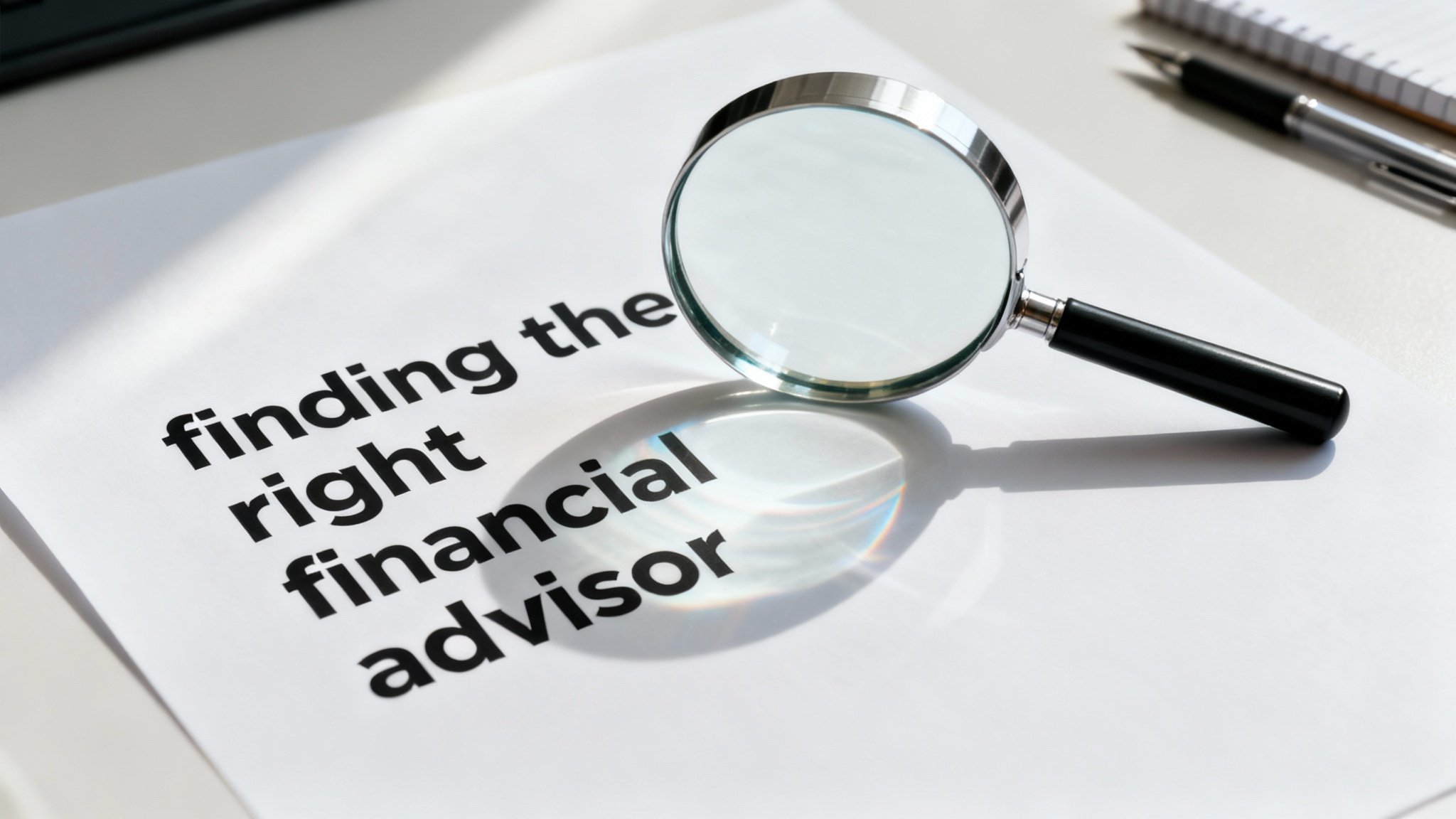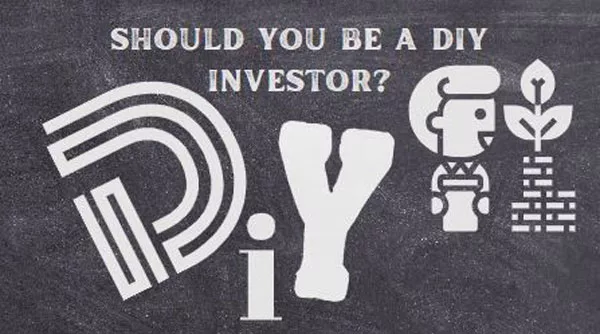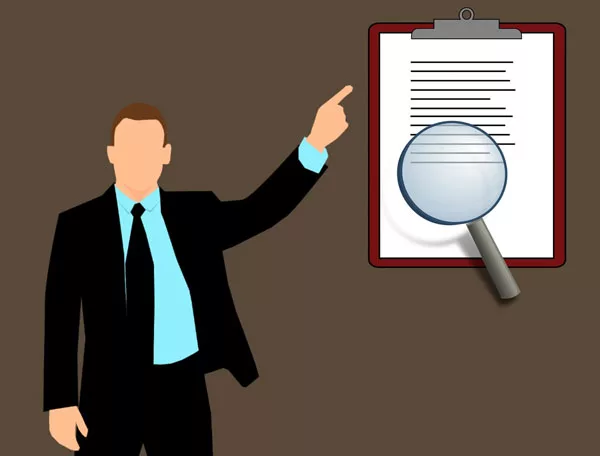How to Find the Right Financial Advisor: A Friendly, No-Nonsense Guide You’ll Actually Enjoy Reading
Learn how to find the right financial advisor with practical steps, real questions, and simple examples—no jargon, just clarity and confidence.
I remember the first time I tried to figure out how to find the right financial advisor. I walked into a glossy office, nodded sagely at words like “asset allocation,” and immediately questioned all my life choices. If you’ve ever felt that weird combo of curiosity and low-key panic around money or financial planning, you’re in good company. Truly. The better news? It doesn’t have to be confusing, intimidating, or… whatever that feeling is when someone says “asset allocation” and you smile like you get it. With a little structure, a handful of smart questions, and one or two honest gut checks, you can find an advisor who fits your actual life—and actually helps you get where you’re going.
In this guide, I’ll walk you through how to find the right financial advisor step by step—what to look for, what to ask, what to avoid—and how to feel confident the whole way through. We’ll keep it human. We’ll keep it useful. And yes, we’ll even make it a little fun. Money can be serious without being joyless. Pinky promise.
Why Finding the Right Financial Advisor Really Matters
You wouldn’t hand your house keys to a stranger and say, “Surprise me.” Same energy with your savings, investments, taxes, and future. It’s worth being picky. A great advisor does more than rebalance a portfolio—they help you sidestep expensive mistakes, steady your nerves when headlines shout, and make clear decisions during life’s plot twists.
That’s the point of learning how to find the right financial advisor: not perfection, just a trusted partner who helps you move forward with less stress and more confidence. Vanguard actually quantified this effect in their “Advisor’s Alpha” framework, estimating that good advice can add about 3% in net returns annually through behavioral coaching, tax efficiency, and smart planning. Three percent might sound small, but compounding is magic. It’s the difference between “retirement someday” and “retirement with margaritas and a view.”
I’ve seen the value up close. When markets went bonkers in 2020, a friend called her advisor at 11 p.m., ready to sell everything. He talked her down. Two years later, she called him the “voice of reason” and sent a sheepish thank-you card. That’s the kind of relationship you want: steady, clear-headed, on your side.
Step 1: Start With You—Define What You Actually Need in Financial Planning

Before you Google how to find the right financial advisor near you, take five quiet minutes and write down what you want help with. Not in perfect planner handwriting—napkin notes are fine. What’s keeping you up at night? Is it retirement? Debt? Building an investment plan? Taxes? College for the kids? All of the above?
When I did this, my list looked like this: retirement, college, and an emergency fund big enough to survive a broken transmission and a surprise dental bill. The clarity was priceless. Suddenly I knew what questions to ask, which advisors to skip, and what “success” would look like after a year together.
If you’re not sure where to start, try this prompt: “If an advisor could magically solve three money headaches for me this year, what would they be?” Congratulations—you just built your shortlist.
Step 2: Understand Who’s Who—Advisor Types, Titles, and What They Mean
This is where people get tripped up, because the industry loves titles. Let’s demystify the main ones you’ll meet as you figure out how to find the right financial advisor.
Certified Financial Planner (CFP).
Think of CFPs as the generalists who see your whole picture—cash flow, investments, taxes, insurance, estate planning. They pass a rigorous exam and have ethical standards set by the CFP Board. When providing financial advice, CFP professionals must act as fiduciaries, which means they put your interests first, always. In my experience, CFPs shine at crafting a plan that connects all your moving parts.
Registered Investment Advisor (RIA) and Investment Adviser Representative (IAR)
An RIA is the firm; the person you work with is often an IAR at that firm. RIAs register with the SEC or state regulators depending on assets under management and must follow fiduciary standards. Translation: their legal duty is to you, not to a commission. RIAs are regularly examined by regulators, which keeps practices honest and transparent.
Chartered Financial Analyst (CFA)
CFAs are investment specialists who survive three legendary exams that make most adults reconsider their life goals. If you’ve got a complex portfolio and want deep research-backed investment management, a CFA brings that institutional-grade lens.
Fee-only vs. fee-based
This matters more than the alphabet soup above. Fee-only advisors are paid by you—via a flat fee, hourly rate, or a percentage of assets under management (AUM). They don’t earn commissions for selling products, which helps avoid conflicts of interest. Fee-based advisors can earn both fees and commissions. That doesn’t make them villains, but it does mean you should ask more questions about how they’re paid and when.
Robo-advisors
Automated platforms like Betterment and Wealthfront offer low-cost portfolio management, typically charging around 0.25%–0.50% annually. They can be terrific for straightforward situations or as a starter option. They can’t, however, coach you at 11 p.m. when the market slides. Self-checkout lines are efficient—until you need a manager.
Step 3: Do the Boring Five-Minute Checks (That Save You Thousands)
There are two official places I always use when I’m deciding how to find the right financial advisor and vet them properly. They take five minutes and can spare you a world of pain.
FINRA BrokerCheck. This is where you look up brokers and see employment history, licenses, and disclosures. If your advisor sells securities as a broker, this is your first stop.
SEC Investment Adviser Public Disclosure (IAPD). This is where you check RIA firms and IARs. You’ll see Form ADV filings, which spell out services, fees, conflicts, and any disciplinary history.
If you find a serious complaint, ask about it directly. Sometimes there’s context. Sometimes there’s a pattern. I almost hired someone who looked great on paper—until I saw a sequence of “unauthorized trading” complaints. No thanks. A five-minute search saved me from an expensive lesson.
Step 4: Map the Money—Fees, Trade-Offs, and What You Actually Get
Here’s where how to find the right financial advisor becomes how to pay the right way. Fees aren’t evil; opacity is. Make sure you know exactly what you’ll pay and what you’ll get.
AUM (assets under management). Common with RIAs. You’ll see 0.25%–1.25% annually, with lower rates for larger accounts. On $500,000, 1% equals $5,000 per year. For that fee, you should expect portfolio management, rebalancing, tax strategies like tax-loss harvesting, and some level of planning. Ask what’s included—and what isn’t.
Flat fee/retainer. Increasingly popular and very transparent. You might pay a one-time plan fee (say $2,000–$5,000) and/or a monthly/annual retainer (say $150–$500/month) for ongoing planning. Investment management may be included or priced separately. I like this model for clarity—you know exactly what you’re paying regardless of market swings.
Hourly. Great for targeted help. Rates often range from $200–$400/hour. You can get a comprehensive plan or second opinion without an ongoing commitment. When I was earlier in my career, this felt perfect: “Help me set the 401(k), don’t charge me rent forever.”
Commissions. Insurance policies and certain investment products pay commissions (think 3%–6% or more). That doesn’t make the product bad—but it does create incentives. If you go this route, make sure you understand the product, the alternatives, and the total cost over time.
One practical tip: always ask advisors to translate percentages into dollars for your specific situation. “If I work with you, what will I pay this year in actual dollars—and what exactly do I get for that fee?” The advisor who answers crisply wins.
Step 5: The First Meeting—Questions That Cut Through the Fog
The first meeting isn’t a finance exam—it’s a vibe check and a clarity check. As you explore how to find the right financial advisor who fits you, bring your top three goals and ask these plain-English questions:
Are you a fiduciary 100% of the time? In writing, please. This one line can save you years of second-guessing.
How do you get paid, and how much will I pay in dollars? What’s included? What’s extra?
What’s your investment philosophy? Do you use low-cost index funds? How do you manage risk? What happens in a downturn?
How often will we talk? Who do I email on Tuesday when I have questions—and how fast do you reply?
What does success look like a year from now? How will we measure it? If they say “beat the market,” be cautious. Planning success is broader than performance alone.
What types of clients do you serve most? Do you regularly work with people like me—small business owners, pre-retirees, families with equity comp, etc.?
Can you describe your tax approach? Do you consider asset location, tax-loss harvesting, and distribution strategies?
If you’ve ever been in a meeting where you learned more about the advisor’s golf handicap than their planning process, you know: the way they answer matters. You’re listening for clarity, humility, alignment—and a communication style that clicks with yours.
Step 6: Investment Approach—Find Your Philosophical Match
You and your advisor don’t have to think identically about financial solutions, but you do need to share a worldview. If you love long-term, low-cost index funds and they’re pitching frequent trading, you’ll both be frustrated.
Active vs. passive. Research consistently shows that low-cost passive strategies often outperform most active managers after fees. If an advisor uses active strategies, ask how they define success, what costs you’ll incur, and what risk controls they use.
Diversification and risk. How do they determine your risk tolerance—questionnaire, conversation, or both? How do they adjust when life changes or markets zig? Is there a policy for rebalancing or just vibes and vibes alone?
Tax efficiency. Tax-loss harvesting, asset location (placing tax-inefficient assets in tax-advantaged accounts), and smart withdrawal strategies can add meaningful value. Morningstar’s “Gamma” research highlights how better decision-making and tax planning meaningfully improve outcomes—again, not sexy, but it works.
I’m a “sleep-at-night” investor. I love broad diversification, boring funds, and the quiet confidence of a plan. When I found an advisor who thought the same way, my shoulders dropped two inches.
Step 7: Communication and Fit—Because Money Is Personal
We talk a lot about numbers, but most of how to find the right financial advisor comes down to communication and trust. Ask how often you’ll meet—quarterly, semiannually, annually—and what communication looks like between meetings. Do they send a one-page summary you’ll actually read? Will they text you back when your company announces a surprise stock grant and you need a quick sanity check?
A quick story: my first advisor answered emails in… three days. My current advisor replies within hours and never makes me feel like an inconvenience. Guess which relationship has lasted.
If you prefer thorough explanations and your advisor lives in bullet points, that mismatch adds friction. Find someone whose pace and style feel natural—warm, straightforward, responsive. Calm is contagious.
Step 8: Red Flags You Shouldn’t Ignore

There’s no need to go full detective mode, but as you learn how to find the right financial advisor, it’s smart to watch for signals.
- Guaranteed returns. If someone promises a specific return, you can promise to exit the meeting.
- High-pressure tactics. “This offer expires today!” Great. So does my interest in working with you.
- Vague fees. If it takes a treasure map to figure out what you’ll pay, that’s the sign.
- Reluctance to provide fiduciary confirmation or references. Transparency is a love language.
- Overemphasis on products. If every road leads to an annuity or whole life insurance, slow down and ask why.
- Disciplinary history patterns. One complaint might have context; a pattern is a pattern.
- Talking at you vs. with you. You want a partner, not a lecturer.
Step 9: Special Situations—Match Expertise to Your Life
How to find the right financial advisor isn’t one-size-fits-all. Your situation shapes your shortlist.
Young professionals. Consider hourly or flat-fee planning to set up priorities: emergency fund, student loans, 401(k)/IRA strategy, starter investing. A robo-advisor can be a low-cost companion for simple portfolios.
Mid-career families. Look for comprehensive planning that coordinates goals: retirement, college funding, insurance needs, and tax strategies. Someone who can help you avoid lifestyle creep is worth their weight in index funds.
Pre-retirees. You want Social Security timing, Medicare coordination, tax-efficient withdrawals, Roth conversions, and sequence-of-returns risk management. A specialist here pays for themselves.
Retirees. Focus on sustainable income planning, required minimum distributions, health care planning, and legacy. You’re playing defense and offense at once.
Business owners. Seek advisors fluent in entity structures, compensation design, retirement plan selection, and succession planning. Ideally, they collaborate with your CPA and attorney.
Tech employees with equity comp. Make sure they understand ISOs vs. NSOs, AMT exposure, blackout windows, 10b5-1 plans, and diversification strategies that won’t torpedo your tax bill.
Values-based investors. If environmental, social, or faith screens matter to you, ask how they implement and measure them—without sacrificing diversification or driving up costs.
Step 10: Where to Look—And How to Make the Shortlist Fast
When people ask me how to find the right financial advisor without spending weeks on it, here’s the 60-minute sprint plan.
Ask trusted friends who aren’t trying to sell you anything. Bonus points if their life looks like yours financially.
Search fee-only directories to reduce conflicts of interest:
- NAPFA (National Association of Personal Financial Advisors) lists fee-only advisors who meet high standards.
- XY Planning Network focuses on advisors serving Gen X and Gen Y (not exclusively), often with flat-fee models.
Read the firm’s Form ADV Part 2 on the SEC’s IAPD site. It’s not a thriller, but it shows services, fees, and potential conflicts.
Schedule three initial calls. You’ll learn more in three conversations than in 30 web pages.
Bring your top three goals and the questions from Step 5. Compare how advisors listen, explain, and follow up.
By the end, one person will usually stand out—not just for their answers, but for how you feel after the call. Clearer? Calmer? That’s your leading indicator.
Step 11: Make the Decision—Head Meets Gut
How to find the right financial advisor is part data, part chemistry. Put the facts on paper—fees in dollars, services included, investment approach, communication cadence. Then sit with your gut. If something feels off—maybe the fees don’t match the value, maybe the answers sounded slick but light—listen to that feeling.
I once passed on a very credentialed advisor because he made me feel small for asking “basic” questions. Hard pass. Money is intimate and so is financial planning. You deserve respect, patience, and clarity.
And yes, you can negotiate. If you have substantial assets or a long-term commitment, ask if there’s flexibility in fees. The worst they can say is no. I’ve saved thousands over the years with one polite ask.
Step 12: Start Strong—What to Do Once You’ve Chosen a Wealth Manager
When you do land on the right person, set the relationship up for success.
Be honest. This is not the time for Instagram money. Share your personal finance such as debts, habits, fears, and hopes. Advisors can’t optimize what they don’t know.
Agree on goals and metrics. “We’ll increase savings by X, consolidate accounts, implement a tax strategy, and review progress in six months.” Clear > vague.
Establish communication norms. How often you’ll meet, how quickly they’ll respond, and how to reach them for urgent questions.
Get everything in writing. Services, fees, and scope. You’ll sleep better.
Keep learning. A good advisor makes you smarter. You should feel more confident with each review, may it be about your savings goals or retirement planning, not more dependent.
Step 13: Review, Refine, Repeat
Plans are living things. Review at least annually. Ask what you paid in fees year-to-date (in dollars), how your portfolio performed versus appropriate benchmarks, and where the plan changed based on tax or life shifts. If you had unrealized losses, ask how tax-loss harvesting was used. If you sold a business or got a raise, revisit goals and risk.
If something’s not working—you’re confused by reports, meetings feel rushed, recommendations aren’t clear—say so. Good advisors adapt.
And if it’s really not working? You can change advisors. It’s like switching dentists—slightly awkward for a minute, then your future self thanks you.
A Note on Evidence—Because Trust Matters
Two sources I’ve found genuinely helpful while learning how to find the right financial advisor and make the most of the relationship:
Vanguard’s “Advisor’s Alpha.” Their framework estimates roughly 3% average net value-add from areas like behavioral coaching, asset location, withdrawal sequencing, and rebalancing. The exact number varies by client and market environment, but the principle is solid: the right advice compounds.
Morningstar’s “Gamma” research. Morningstar analyzed how better financial decision-making—things like optimal asset allocation, withdrawal strategies, and tax planning—can significantly improve outcomes. Again, not flashy, but deeply practical.
These aren’t sales brochures. They’re sober, data-backed arguments for thoughtful planning and coaching—the unglamorous work that moves the needle.
Bringing It All Together—How to Find the Right Financial Advisor Without Losing Your Mind

If you’re still with me (I like you already), here’s the heart of it. How to find the right financial advisor boils down to a handful of steps that anyone can do:
Know what you want help with. Your top three goals guide everything.
Understand the landscape. CFPs, RIAs/IARs, CFAs, fee-only vs. fee-based, and when a robo-advisor makes sense.
Check the basics. Use official sources in the financial industry to verify background, fees, and services.
Ask the right questions for financial guidance. Fiduciary status, fees in dollars, investment and tax advice, communication cadence, fit with clients like you.
Match philosophies. You and your potential advisor don’t need the same favorite coffee, but you do need the same investing worldview.
Trust your gut—after doing your homework. You’re hiring a thinking partner, not a product.
Start strong and review regularly. Money is a marathon, not a sprint. Plans evolve as life does.
I’ve worked with advisors who made me feel like a tiny line item and advisors who made me feel like a priority. The difference wasn’t the logo on the door—it was the alignment, clarity, and care they show when I shared my financial goals. You deserve the combination of expertise and empathy. When you get it right, you’ll feel it in your stress levels and your statements.
Final Word: How to Choose a Financial Advisor For You—Now
If you came here wondering how to find the right financial advisor without a migraine, I hope you’re leaving with a clear path. Start with your goals. Learn the landscape. Verify the basics. Ask real questions. Choose the person who brings clarity, not confusion—calm, not hype. And then let the plan work for you.
I’ve always believed that good money decisions compound beyond dollars. They compound in confidence, margin, and freedom. The right advisor can help you get there faster, with fewer detours and late-night panic googling. So take the next step—schedule a couple of intro calls, bring your top three goals, and see who earns your trust. You’ve got this. And future-you—the one who sleeps better and smiles more—will be very, very grateful.
Frequently Asked Questions
Q: When should I start looking for an advisor to help me with my financial goals?
A: Big life changes are perfect triggers—new job, marriage, kids, inheritance, business sale, or five years from retirement. That said, starting early pays off. Even a few hours with a pro can prevent years of “oops.”
Q: Do I need a fee-only advisor?
A: Not always, but fee-only helps reduce conflicts. If you choose fee-based or commission models, ask extra questions about incentives and compare alternatives before you sign anything.
Q: How much should I expect to pay?
A: For AUM, 0.25%–1.25% is common depending on portfolio size and services. Flat retainers often range from a few thousand dollars per year, and hourly rates tend to run $200–$400. Always get the number in dollars for your situation.
Q: What if I just use a robo-advisor?
A: For simple portfolios and automatic rebalancing, robo-advisors are a solid, low-cost option. When taxes, equity comp, or retirement income planning enter the chat, human planning pays off fast.
Q: How will I know it’s the right fit?
A: You’ll leave meetings feeling clearer. Your questions get answered, fees make sense in dollars, and the plan connects to your real life. You’ll stop doom-scrolling financial headlines and start following a roadmap. That’s the win.
If you remember nothing else, remember this: how to find the right financial advisor isn’t about finding “the best” in some abstract ranking. It’s about finding the best for you—your goals, your season, your style. Start there, and the rest gets a lot easier.








One Comment
Comments are closed.